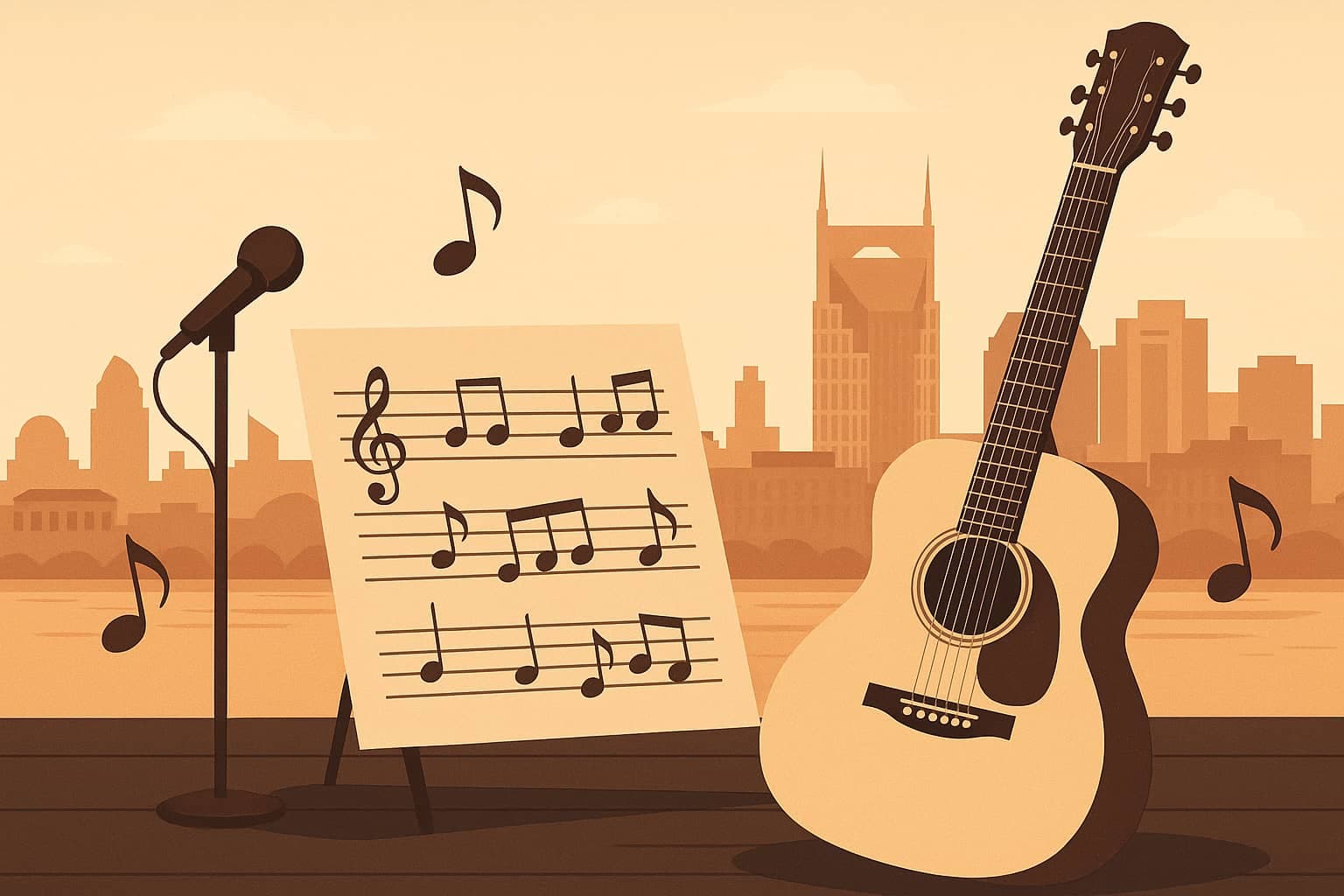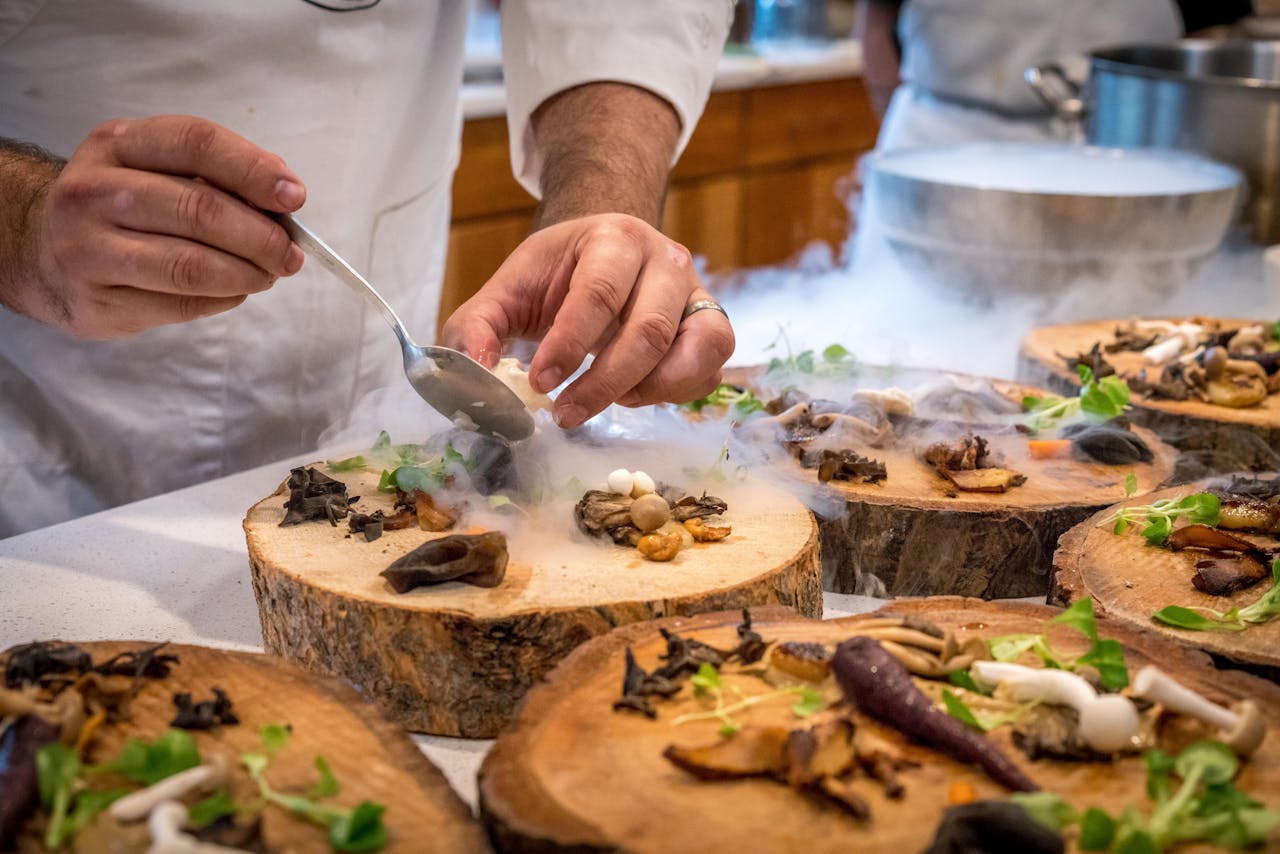Nashville isn’t just a city—it’s the heartbeat of modern music. Here, you’ll find world-famous venues, talented writers, and live performances that show exactly how songs come together.
By focusing on real examples from Nashville, you’ll learn core skills for your IB Music IA: listening, analysis, and clear writing.
Imagine presenting a project where your examiner recognizes the very stage you studied—that instant connection makes your work memorable.
Furthermore, using well-known spots adds credibility. You’re not talking about random tunes; you’re talking about the same stages where icons record and perform. This concrete link grabs attention and sets your IA apart from generic topics.
Objectives of This Guide
- Understand key musical elements through famous Nashville spots.
- Build a clear research question that matches IB criteria.
- Learn simple steps to collect, analyze, and explain your findings.
By the end, even if you’ve never written a single note of code or scanned a musical score, you’ll know exactly what to do—step by step.
Quick Start
If you’d like a polished example to adapt, you can buy Music IA from a reliable IB essay writing service, and see a full model with detailed comments.
Now that you know why Nashville offers the perfect backdrop, let’s look closely at one iconic venue and uncover the musical details you can study in your own IA.
Case Study 1 – The Bluebird Café
The Bluebird Café is a small room where songwriters share their latest work. Its simple layout—just a stage, a few tables, and warm lighting—puts the focus on voice and guitar.
This clarity makes it ideal for beginners: you can easily hear every note and lyric.
Real-life example: When Emma attended her first open-mic night, she noticed how the singer’s voice filled the space without any backing tracks. That moment showed her how arrangement choices affect emotional impact—a perfect topic for her IA.
Musical Features to Analyze
Intimate Acoustic Arrangements
- What to listen for: Notice how just two or three instruments support the singer.
- Why it matters: Your analysis can compare songs with full band backing versus solo performances.
Storytelling Through Lyrics and Structure
- What to note: Pay attention to verse-chorus patterns and key lyrical phrases.
- Why it matters: You can ask, “How does song structure at the Bluebird enhance storytelling?”
Linking to Your IA
Sample Research Question
“How do acoustic settings at the Bluebird Café emphasize emotional expression in country-folk songs?”
This question is tight, clear, and matches Criterion A: Planning—exactly what IB examiners want.
How IB Writing Services Can Help
- Refine your question to match formal IB language.
- Organize your introduction so each sentence flows logically.
- Check clarity in your methodology section, ensuring a smooth read.
With the Bluebird’s details in mind, you’re ready to move on to the Grand Ole Opry, where scale and production add new layers for analysis.
Case Study 2 – The Grand Ole Opry
Significance in Country Music Evolution
The Grand Ole Opry is known as the show that shaped country music. Since the 1920s, artists have performed live on its stage, blending tradition with new sounds.
This history gives you clear material to analyze how music trends grow over time.
Picture your examiner recognizing a performance clip from the Opry itself—that nod of approval can boost your confidence and set your work apart.
By choosing this venue, you tap into a timeline of hits and legends, making your IA feel both grounded and exciting.
Performance Elements
Orchestration and Live Sound Techniques
- What to notice: Listen for the mix of fiddle, steel guitar, and backing instruments.
- Why it matters: You can compare tracks that use a full ensemble versus simpler setups.
Audience Interaction as a Compositional Factor
- What to watch: Observe moments when performers pause for applause or invite sing-alongs.
- Why it matters: This gives you material to discuss how live feedback shapes a song’s structure.
Linking to Your IA
Sample Research Question
“How do orchestration choices at the Grand Ole Opry influence audience engagement in country music performances?”
This question is focused and matches Criterion A: Planning, which makes it easier to score well.
How IB Writing Services Can Help
- Suggest precise wording for your question so it sounds formal yet clear.
- Guide you in explaining technical terms like “orchestration” in one simple sentence.
- Ensure your methodology section reads smoothly and connects directly to your goals.
Now that you’ve seen how large-scale production adds depth, let’s shift to street performances—where raw talent and improvisation bring a different kind of magic.
Case Study 3 – Lower Broadway Street Performances
Street-Level Music Culture
Lower Broadway is lined with open-air stages where anyone can stop and play. This setting strips music back to its basics. By studying these pop-up shows, you’ll learn how environment affects sound and audience reactions.
Think about the excitement you feel when you stumble on a band playing right in front of you—capturing that energy makes your analysis vivid and memorable.
Instrumentation and Improvisation
Use of Steel Guitar and Harmonica
- What to note: Listen to how these instruments carry melody without heavy production.
- Why it matters: You can examine the emotional impact of raw timbres compared to studio recordings.
Spontaneous Collaboration Between Artists
- What to observe: Watch for musicians joining each other on stage without rehearsal.
- Why it matters: This reveals how creative decisions are made on the spot, giving you great content for discussion.
Linking to Your IA
Sample Research Question
“In what ways does improvisation by street performers on Lower Broadway affect the listener’s perception of authenticity?”
This question is clear, linkable to Criterion A, and offers a path to precise analysis.
How IB Writing Services Can Help
- Refine your question so it fits formal IB guidelines.
- Help you write concise notes on how you collected your observations.
- Review your commentary to ensure each point ties back to your main goal.
With these three case studies in hand, you have concrete material to shape a strong IB Music IA. Next, we’ll look at how to bring all your findings together in a clear, well-organized report.
Structuring Your IA
You’ve explored three distinct settings—from cozy cafés to open streets—and you’ve seen what to listen for and how to frame your questions. Next, let’s tie everything together so your IA reads like a clear, logical story.
Begin each major section by noting which IB criterion it addresses.
Connecting Case Studies to IB Criteria
For example:
- Introduction: Criterion A (Planning) – your research question and scope.
- Case Study Sections: Criterion B (Solution Overview) – your descriptions of venues and musical elements.
- Analysis & Visuals: Criterion C (Functionality) – any charts or tables you include.
- Reflection: Criterion D (Evaluation) – your discussion of strengths, weaknesses, and possible extensions.
Leila prefaced her Bluebird Café section with “This part meets Criterion B by…” That simple label helped her examiner see exactly how her work matched the mark scheme—earning her extra points for clarity.
Organizing Your Report
Use clear headings and a consistent order so your reader never feels lost.
A recommended flow:
- Introduction (h2)
- Case Study 1 – The Bluebird Café (h2)
- Case Study 2 – The Grand Ole Opry (h2)
- Case Study 3 – Lower Broadway (h2)
- Structuring Your IA (h2)
- Conclusion (h2)
- Appendix & References (h2)
Under each h2, use h3 and h4 for subpoints (e.g., “Orchestration and Live Sound Techniques” as an h4).
This hierarchy makes it easy to follow and shows examiners you understand academic structure.
A well-organized report reduces your own stress. When you see each part clearly labeled, you’ll feel in control—and that confidence comes across in your writing.
Embedding the CTA
Right after your Introduction, you can add:
“If you’d like a step-by-step model and detailed feedback, consider buy Music IA to see a full, annotated example.”
Placing this link early ensures readers spot it without feeling overwhelmed later.
Conclusion
- You learned to pick venues with clear musical traits.
- You saw how to form precise research questions.
- You practiced linking each section back to IB criteria.
By focusing on real Nashville spots, your IA gains both credibility and originality. Now it’s the right exact time to start your writing.
- Draft your outline using the structure above.
- Gather audio clips or visit one venue to take notes.
- Write each section in short bursts, checking against IB criteria as you go.
Sharing your draft with a mentor or using professional feedback can catch small errors before they cost marks. Ready to finish strong? Order a Music IA for a complete, ready-to-use example that you can adapt in minutes.
Good luck, your examiner will appreciate the clear focus and real-world connections you’ve built!


